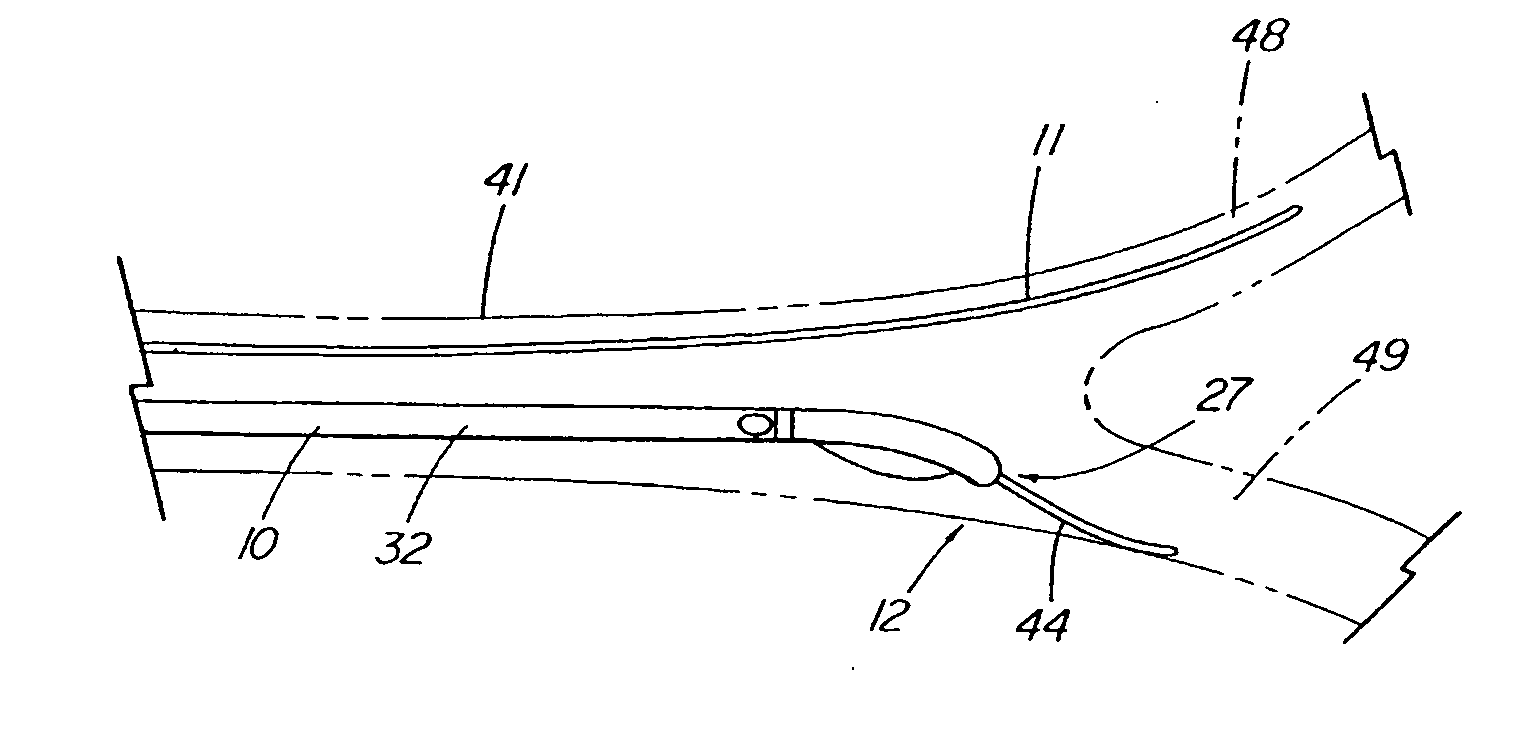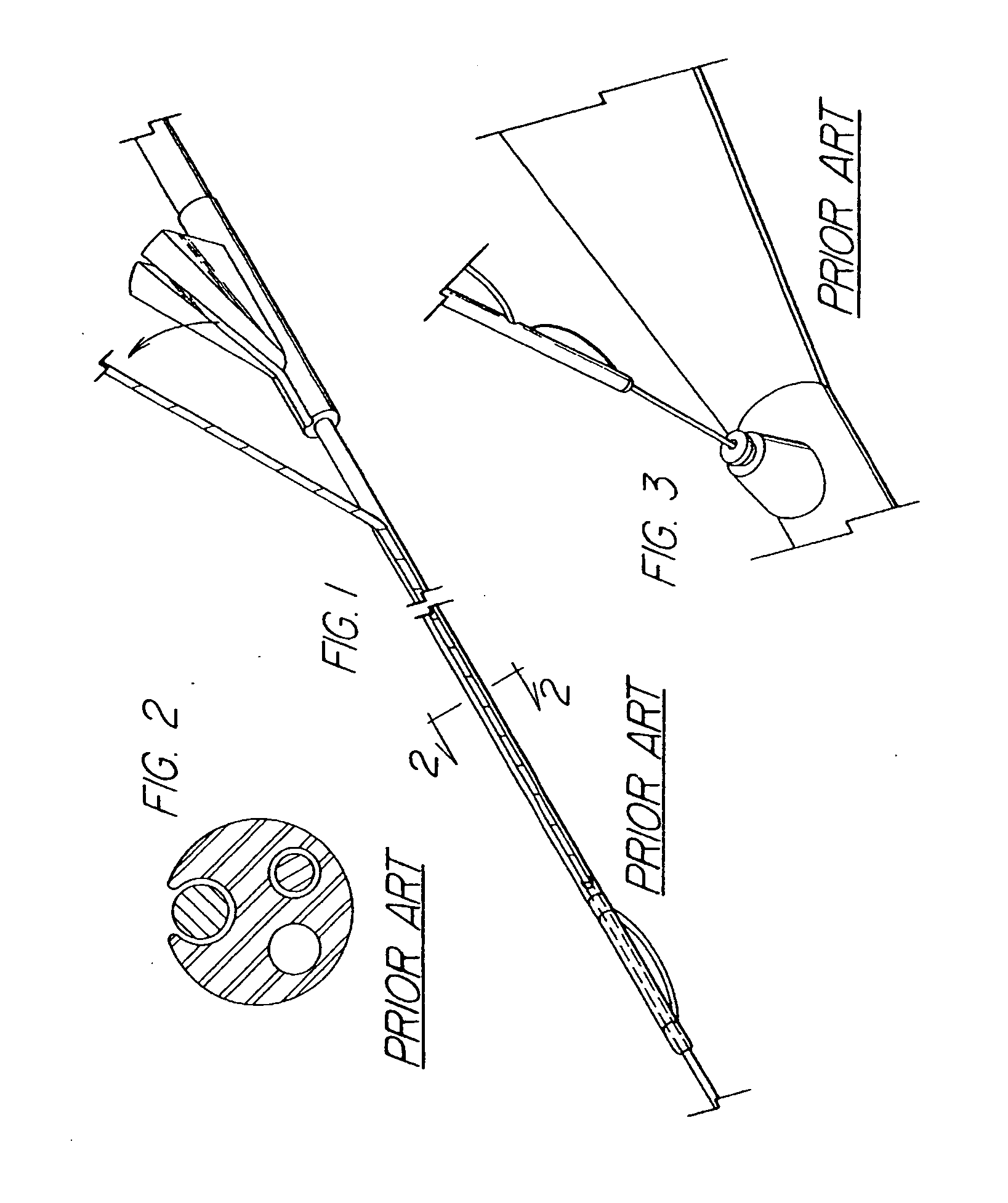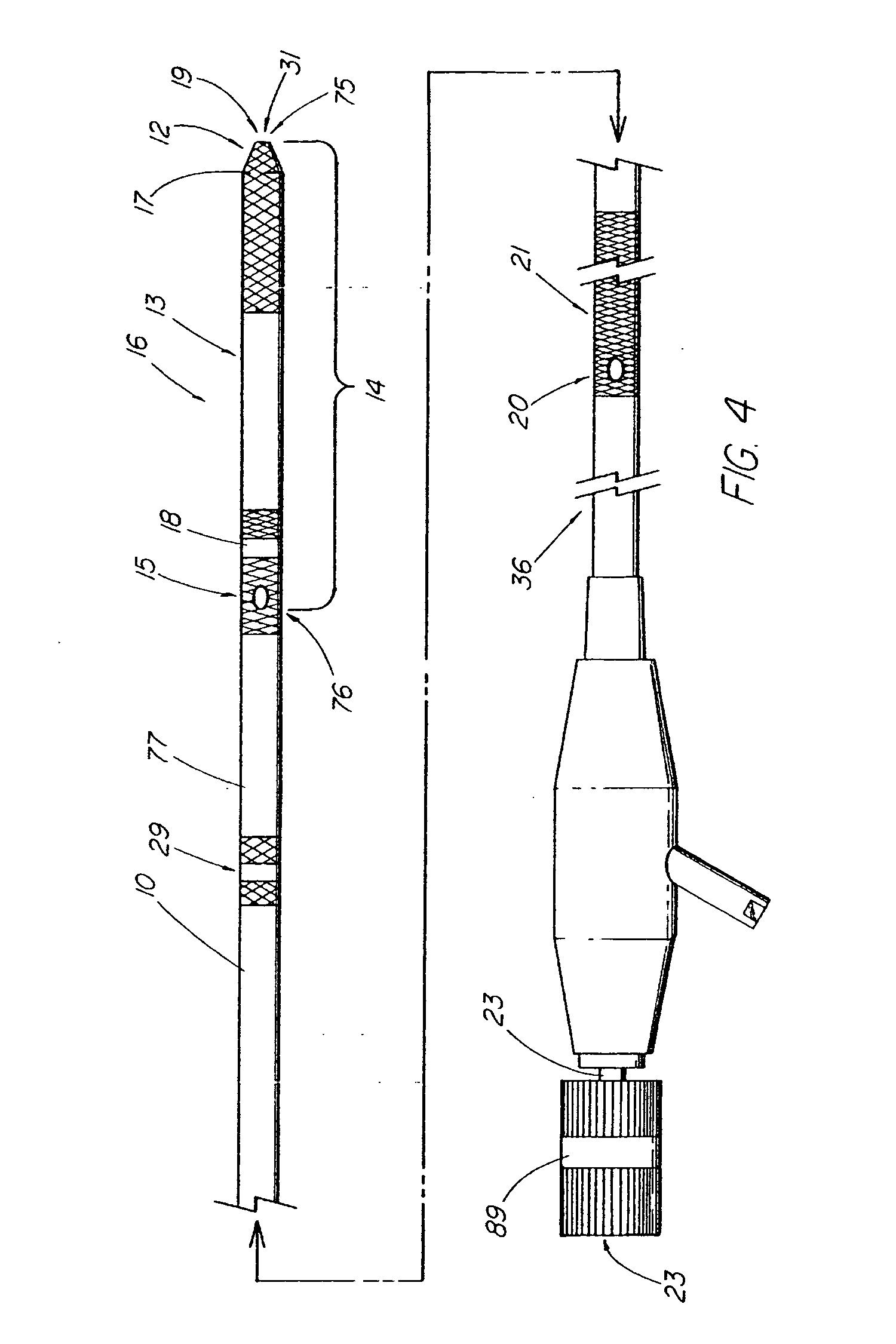System and method for introducing a prosthesis
a prosthesis and wire guide technology, applied in the field of medical devices, can solve the problems of loss of wire guide access, excessive retraction of wire guide, extreme difficulty for physicians to attempt, etc., and achieve the effect of adding rigidity to the devi
- Summary
- Abstract
- Description
- Claims
- Application Information
AI Technical Summary
Benefits of technology
Problems solved by technology
Method used
Image
Examples
second embodiment
[0114] an elongate engagement member 89, depicted in FIG. 25, comprises a thread-like snare member 96 made of suture, wire, cable, or other strand of material which loops around, ensnares, or otherwise releasably engages the wire guide within the passageway 27. The snare member 96 can be attached to an actuating portion of the handle to give the operator sufficient control over its operation. When the operator wishes to disengage the wire guide 11 from the tubular member 77, tension is released on the snare member 96, or it can be cut or one end released so that it can be withdrawn from the passageway 27. Alternatively, the snare member 96 can be disposed on the outside of the tubular member 77 to releasably engage and secure the wire guide 11. The depicted embodiments represent but two possible types of devices adapted for securing the first elongate medical device 10 and wire guide 11 so that they can be co-introduced through a channel without disengaging therein.
[0115] The elonga...
PUM
 Login to View More
Login to View More Abstract
Description
Claims
Application Information
 Login to View More
Login to View More - R&D
- Intellectual Property
- Life Sciences
- Materials
- Tech Scout
- Unparalleled Data Quality
- Higher Quality Content
- 60% Fewer Hallucinations
Browse by: Latest US Patents, China's latest patents, Technical Efficacy Thesaurus, Application Domain, Technology Topic, Popular Technical Reports.
© 2025 PatSnap. All rights reserved.Legal|Privacy policy|Modern Slavery Act Transparency Statement|Sitemap|About US| Contact US: help@patsnap.com



